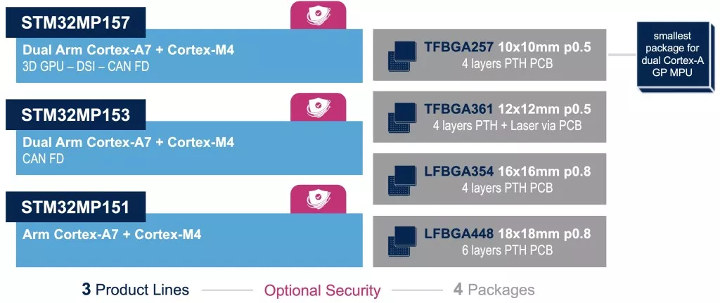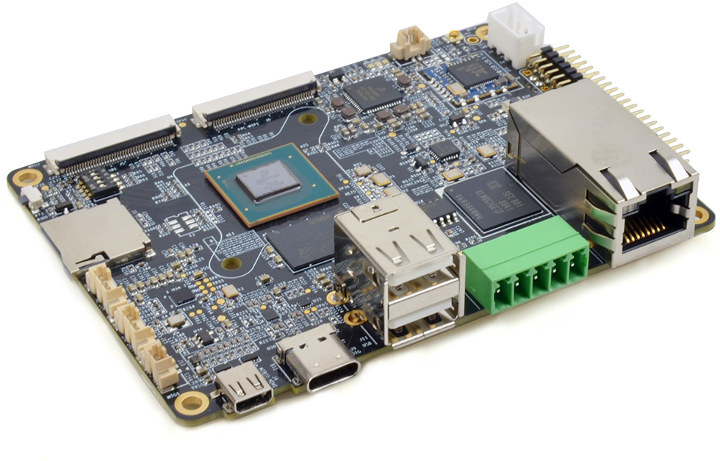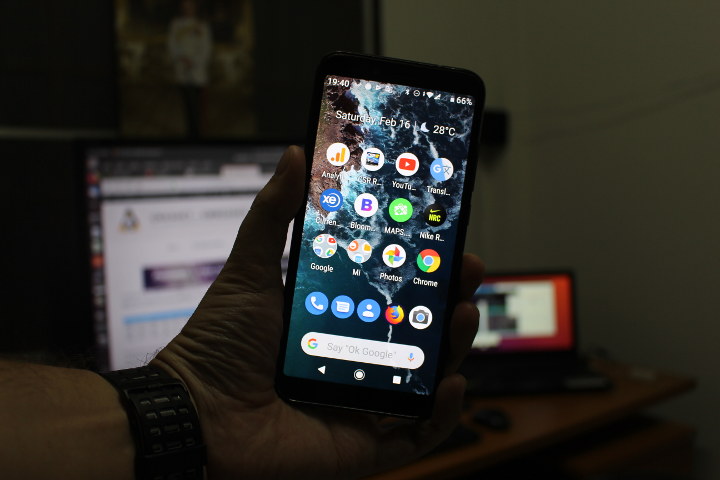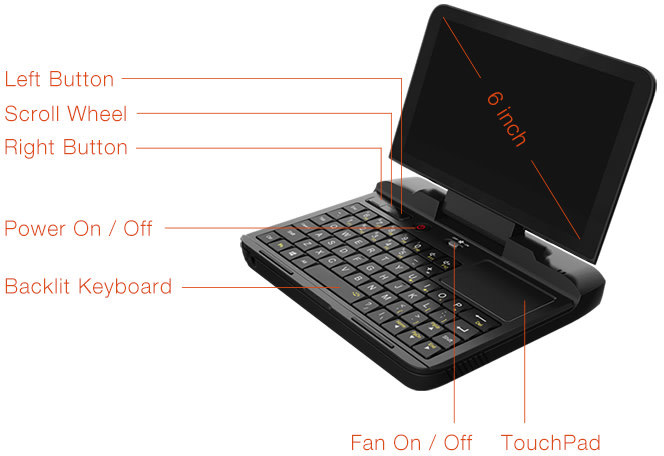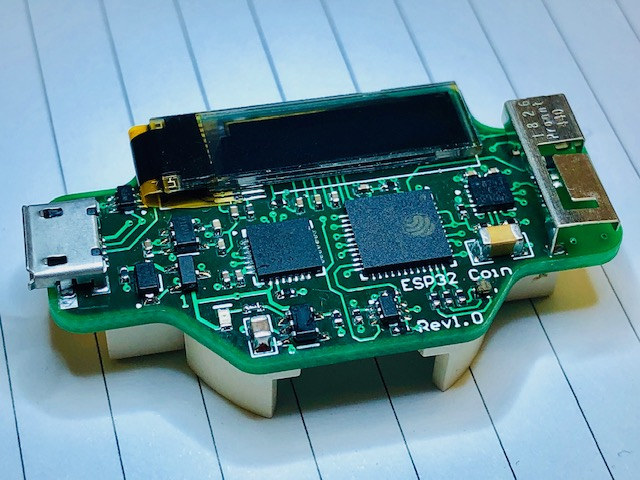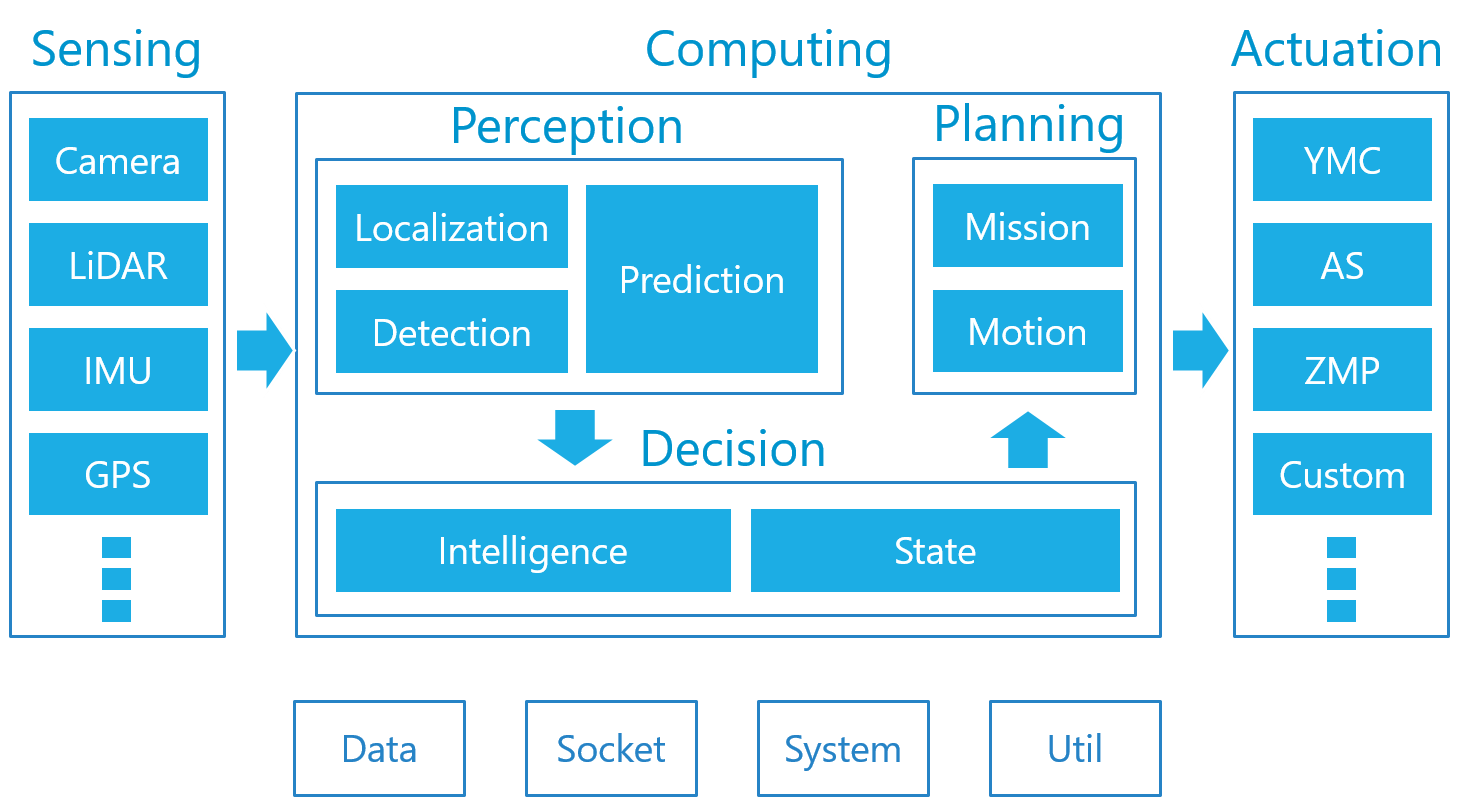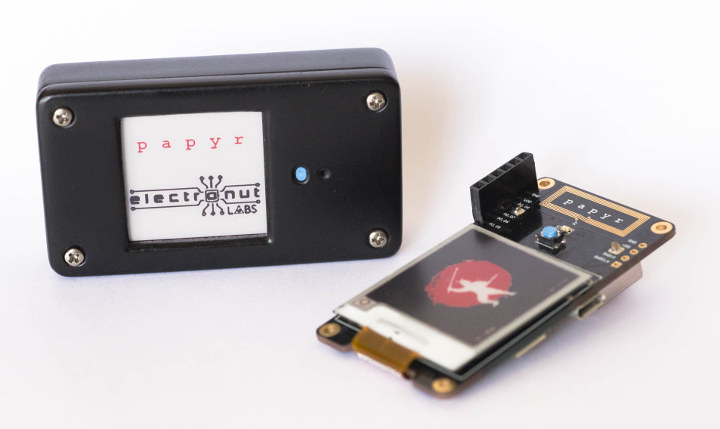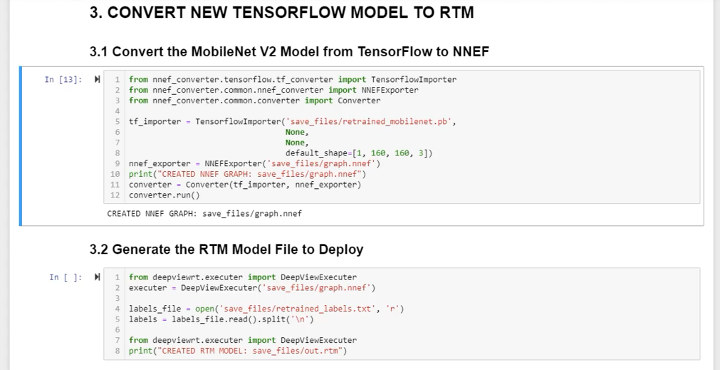When Linux 4.17 was released last June, we discovered an interesting new STM32 part: STM32MP157C dual core Cortex-A7 processor. It was the first time I saw an STM32 IC not based on Arm Cortex-M microcontroller core, but we knew only very little details at the time. STMicro has now made it official, and introduced STM32MP1, the first STM32 MPU (Microprocessor Unit) that features one or two Arm Cortex-A7 cores running Linux, as well as an Arm Cortex-M4 real-time core that allows to re-use code from existing STM32 projects. STM32MP1 key features and specifications: Cores Single or Dual Cortex-A7 core(s) running at 650 MHz with 32-Kbyte L1 Instruction cache, 32-Kbyte L1 Data cache, 256-Kbyte Level 2 cache Cortex-M4 core running at 209 MHz with single-precision floating point unit (FPU), digital signal processor (DSP) instructions, and memory protection unit (MPU) GPU (STM32MP157 only) – Vivante 3D GPU with OpenGL ES 2.0 support; […]
Pico-ITX i.MX8M Board Enables Offline Voice Control with Snips
A few days ago, we covered Estone Technology’s MJ-100 RK3399 rugged tablet. I’ve just realized Estone Technology used to promote their embedded product under the Habey USA brand, which we covered a few times here, and the company has also announced another new product ahead of Embedded World 2019 with their EMB-2238 Pico-ITX i.MX8M board specifically designed for voice control applications. The company setup two voice control demos with the board: one with Amazon Alexa Voice Service (AVS) and another with Snips that works locally without any Internet connection. We actually came across Snips previously for an article comparing microphone arrays, but I never looked into Snips into details or saw an actual demo. Let’s have a quick look at EMB-2238 board specifications first: SoC – NXP i.MX 8MQuad with 4x Arm Cortex-A53 cores @ 1.5GHz, 1x Arm Cortex-M4 realtime-core @ 266MHz, Vivante GC7000L/GC7000LVX with support for OpenGL/ES 3.1, OpenGL […]
Xiaomi Mi A2 Review with Android 9.0 Pie
I had been using Xiaomi Mi A1 Android One smartphone since the end of 2017, and was mostly satisfied with it thanks to regular (monthly) firmware update, although I was a bit disappointed by the camera overtime. Eventually I had a serious issue with Mi A1’s eMMC flash, and stopped using it at the end of last year, or roughly after one year of service, since the phone became unusable, unbearably slow. Xiaomi Mi A2 and A2 Lite where released last summer, and having seen Mi A2 was getting an Android 9.0 firmware in Q4 2018, I asked GearBest whether they could send a sample to review the latest Xiaomi Android One phone. They accepted, and I posted the first part of the review in early December. However, at this time, I did not get the update, since it was not released in Thailand, but soon enough Xiaomi Mi A2 […]
GPD MicroPC is a Windows 10 / Ubuntu MATE Portable Mini PC for Sysadmins (Crowdfunding)
I shortly discussed GPD MicroPC, a portable computer specifically designed for for network engineers and sysadmins in a post about the company’s Pocket 2 Amber Black mini laptop, but I did not go into details at the time since it was not available. GPD has now launched a crowdfunding campaign on Indiegogo for the portable Gemini Lake mini PC, where you can pick one of the 2,000 units that are available for $299 including worldwide shipping. GPD MicroPC specifications: SoC – Intel Celeron N4100 quad core Gemini Lake processor with Intel UHD Graphics 600 System Memory – 4GB LPDDR4 Storage – Replaceable 128GB M.2 2242 SATA SSD, micro SDXC card slot Display – 6″ display with 1280×720, Gorilla Glass 4, 178° viewing angle Video Output – HDMI 2.0 up to 4K @ 30 Hz Audio – Built-in microphone, headphone jack, digital audio via HDMI Networking Gigabit Ethernet 802.11 a/b/g/n/ac WiFi […]
ESP32 CoinCell is a Tiny, Coin Cell Powered ESP32 Pico D4 Board
ESP32 boards can easily be powered by batteries, either through an external USB battery shield, or direct connection to an ESP32 board fitted with battery charger circuitry. But Miek Rankin has done something a bit different, as he designed ESP32 Coincell board based on an ESP32 Pico D4 SiP (System-in-Package) powered by a rechargeable LIR2450 coin cell battery with 100mAh capacity. ESP32 CoinCell board specifications: SiP – Espressif Systems ESP32 Pico D4 Wifi/Bluetooth processor Connectivity 802.11 b/g/n WiFi up to 150 Mbps Bluetooth 4.1 LE On-board antenna Display – 0.69″ OLED display with 96×16 resolution USB – 1x micro USB port for charging and debugging (via CP2102N USB to TTL chip) Sensor – LIS3DHTR accelerometer Battery / Power Supply SE5218ALG-LF 500mA LDO power supply SL4054ST25P LiPo battery charger Socket for for LIR2450 (3.7V/100Mah battery) Consumption – 0.45mA in sleep mode Dimensions – Small If you don’t connect the battery, the board […]
Autoware is an “All-in-One” Open-source Software for Autonomous Driving
All major automotive companies, and some technology companies are all working on autonomous driving with the ultimate goal of achieving level 5 autonomous driving meaning no human intervention is needed at any stage. Development will take some more time, and companies are now competing with closed source software and hardware. But as I browsed through Linaro Connect Bangkok 2019 schedule, I found out there’s an open source autonomous driving software called Autoware.AI. Several “Autoware” projects are managed by the newly founded Autoware Foundation, a non-profit organization created to develop a synergy between corporate development and academic research in order to provide access to autonomous driving technology for everyone: Autoware.AI is the first version built on ROS 1, and Linux, and has been developed as a research and development platform Autoware.auto is the second version built on ROS 2, and Linux, with a complete redesign. Autoware.IO is an interface project for Autoware […]
Papyr is a Nordic nRF52840 based Bluetooth/802.15.4 ePaper Display
Electronut Labs has designed a Nordic Semi nRF52840 boards featuring a black, red, and white e-Paper display. Papyr board supports both Bluetooth LE (BLE5, BLE Mesh) and 802.15.4 (Thread, Zigbee) connectivity, and can be controlled via an Android app, with iOS support coming later on. Papyr hardware specifications: Wireless Module – Raytac MDBT50 module with Nordic nRF52840 BLE/802.15.4 SoC (as used in Raytac MDBT50Q-RX Bluetooth 5 LE USB adapter) Connectivity – Bluetooth 5 LE/Mesh, 802.15.4 (Thread/Zigbee), NFC (PCB antenna) Display – 1.54″ 200×200 pixel red/black/white epaper display USB – 1x micro USB device port Expansion – Extra GPIOs via 2.54mm header Debugging – SWD Programming header Misc – RGB LED, push button, USB/Battery power switch Power Supply – 5V via USB, or CR2477 coin cell Dimensions – 65 x 35 mm You can control the board using Electronut Labs app for Android. Three features are supported at this stage: Draw, […]
Adding Machine Learning based Image Processing to your Embedded Product
CNXSoft: This is a guest post by Greg Lytle, V.P. Engineering, Au-Zone Technologies. Au-Zone Technologies is part of the Toradex Partner Network. Object detection and classification on a low-power Arm SoC Machine learning techniques have proven to be very effective for a wide range of image processing and classification tasks. While many embedded IoT systems deployed to date have leveraged connected cloud-based resources for machine learning, there is a growing trend to implement this processing at the edge. Selecting the appropriate system components and tools to implement this image processing at the edge lowers the effort, time, and risk of these designs. This is illustrated with an example implementation that detects and classifies different pasta types on a moving conveyor belt. Example Use Case For this example, we will consider the problem of detecting and classifying different objects on a conveyor belt. We have selected commercial pasta as an example […]


